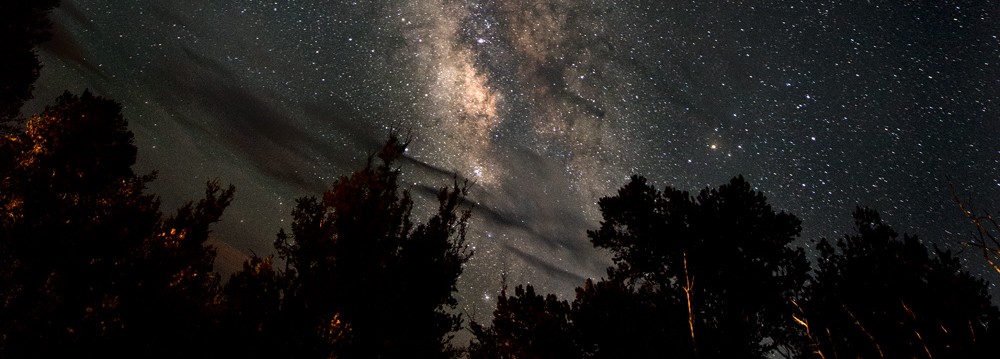As mentioned several times throughout our unit 3 lessons, Thomas King, in his novel “Green Grass, Running Water”, creates layers of stories with the expectation that the reader will choose to uncover them or leave them as unknown allusions. The first few characters in section 169-180 of his book follow the four Indians, Bill Bursum, and Alberta. What shocked me the most while researching the historical and literary symbolism was that even within these sometimes personal, sometimes culturally broader side stories, King’s social and political commentary is fixed on Western hierarchy and unequal representation of Aboriginals.
The four Indians, collectively, Ishmael, The Lone Ranger, Hawkeye, and Robinson Crusoe, follow King’s pattern of four directions (red-east, white-south, black-west, blue-north), the four stages of life (First Woman, Thought Woman, Changing Woman, Old Woman), and the four sections of the story.
The Lone Ranger, a character featured in numerous films, radio broadcasts, and TV shows, is a white male protagonist in a loose plot (varies because of the broad scope of stories he is featured in) that follows a hero and his Aboriginal companion Tonto, to rescue towns. While this historically troubling duo reflects on past cultural stereotypes and damaging character tropes, the film was recreated in 2012 by Disney. According to Margery Fee and Jane Flick in their essay “Coyote Pedagogy: Knowing Where the Borders are in Thomas King’s ‘Green Grass, Running Water’”, The Lone Ranger represents a hierarchical model in Western Literature, of the white man who is all-knowing—The Lone Ranger translated in Spanish means “He who knows”, and the Aboriginal sidekick (referred to as marginalization outside of the movie business) Tonto, whose name in Spanish translates to “Numbskull” (Fee and Flick 135).
Yet again, Hawkeye is a white, male, antagonist with an Aboriginal sidekick (Chingachgook ) in the saga, “The Leatherstocking Saga” written by James Fenimore Cooper. Rather than focus on the hierarchical relationship already observed between The Lone Ranger and Tonto, perhaps King is commenting on the author, Cooper, who is credited for the concept of The Noble Savage (McGregor 120). This damaging idea positions Aboriginal people as primitive, common, problematic, something to be fixed.
Robinson Crusoe, the novel by the white, male, British writer Daniel Defoe, is also the name of the antagonist in Defoe’s story about a man stranded on an island, who befriends an Aboriginal man. The novel was believed to be an autobiography for years, before it was revealed to be based on the life of a Scottish man. Perhaps King finds this telling (and slightly hilarious) of the realistic possibility that Crusoe actually encountered cannibals and saved an Aboriginal man from a savage life. Similar to The Lone Ranger, his character presents a hierchical connection between white, male, antagonists in novels, and their Aboriginal sidekicks, or in this case, Crusoe’s Aboriginal project who he Christens.
Ishmael is a character in the story Moby Dick by Herman Melville. He too befriends an Aboriginal cannibal named “Queequeg”, and survives a flood by staying afloat on Queequeg’s coffin (Flick). In a novel full of Christian symbolism (Ishmael is taken from the Bible), Queequeg as a cannabil and pagan may symbolize the devil within Christian indoctrinated belief.
According to Fee and Flick, King relies on a Westernized embedded inability to see anything different from the norm as acceptable. That is why, the four Indians, who are represented as mixed-race pairs in Western literature, are looked over, and are not recognized for their sex–all four are female, or for their ethnicity—all four are aboriginal (Fee and Flick 135).
Bill Bursum, according to Flick, encompasses the hostility toward Aboriginals that Buffalo Bill historically did as well. King’s Bill Bursum embodies the idea that Aboriginals need to be eradicated, although, to a slightly smaller degree. Bursum is the first to buy property around the lake, and is unable to occupy it until Eli’s cabin is destroyed or moved. While he doesn’t show violent contempt toward Eli, his thoughts on page 267, when he claims Eli and his cabin “can’t stay there forever” suggest a similar attitude that Buffalo Bill violently up took as he hunted and killed buffalo in order to try and eradicate the Plains people.
The Shagganappi Lounge, is referenced indirectly previously with the four Canadians who eat at Latisha’s café, one of which is P. Johnson, author of “The Shagganappi”. Pauline Johnson, a half Mohawk, half English writer, famously wrote “never let anyone call me a white woman”, and embraced her Mohawk identity, claiming in “The Shagganappi”,
“Oh, why have your people forced on me the name of Pauline Johnson?” she said…Was not my Indian name good enough? Do you think you help us by bidding us forget our blood? by teaching us to cast off all memory of our high ideals and our glorious past? I am an Indian. My pen and my life I devote to the memory of my own people. Forget that I was Pauline Johnson, but remember always that I was Tekahionwake, the Mohawk that humbly aspired to be the saga singer of her people, the bard of the noblest folk the world has ever seen, the sad historian of her own heroic race. “
Works Cited
Chester Blanca. “Green Grass Running Water: Theorizing the World of the Novel.”Canadian Literature 161-162. (1999). Web. April 04/2013
Fee, Margery, and Jane Flick. “Coyote Pedagogy: Knowing Where the Borders are in Thomas King’s Green Grass, Running Water.” Canadian Literature (1999): 131
King, Thomas. Green Grass Running Water. Toronto: Harper Collins, 1993. Print.
